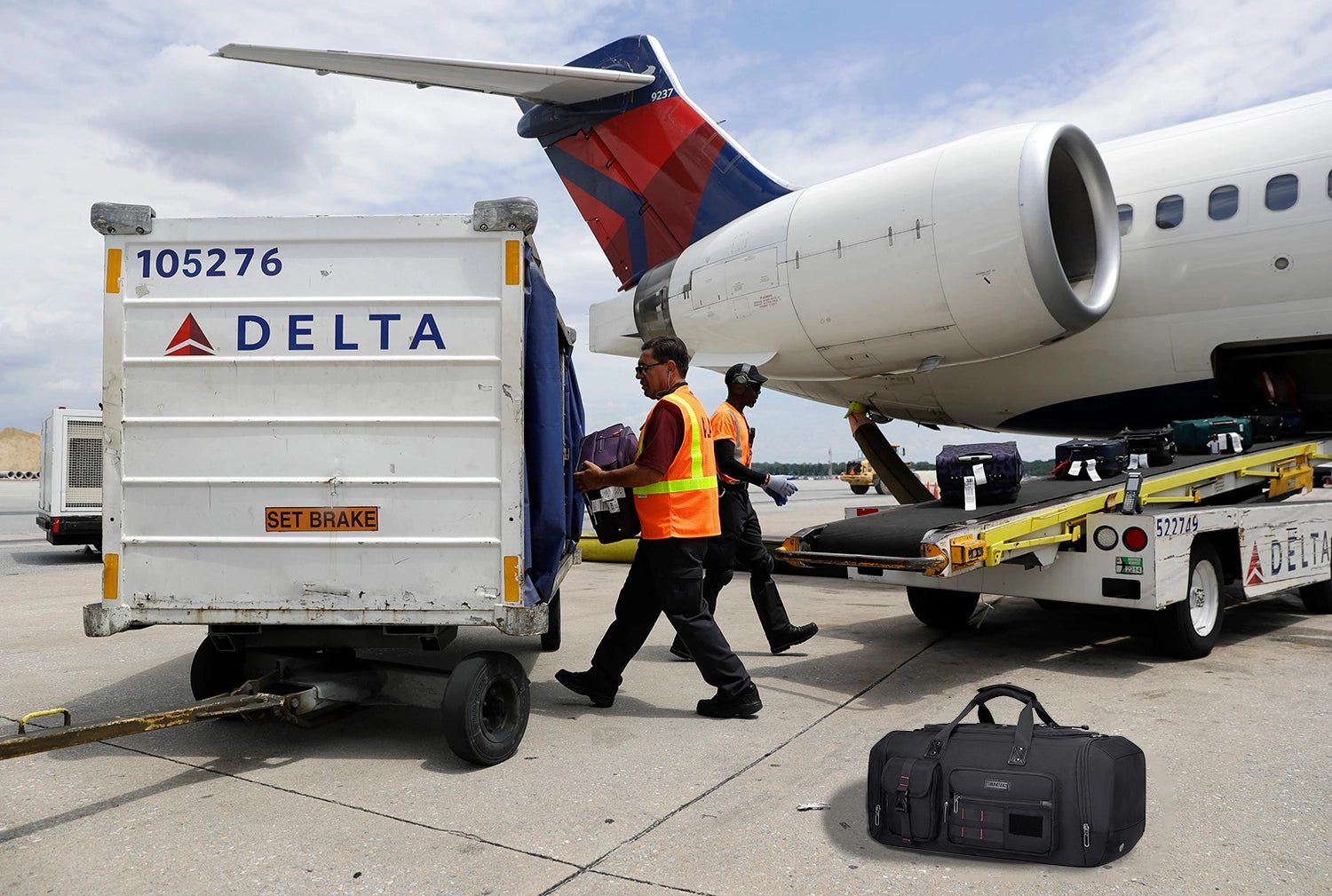I. Introduction
Contextual Background
In the ever-changing landscape of air travel, understanding airline baggage policies has become a vital part of trip planning. For modern travelers, backpacks have emerged as versatile, all-in-one solutions for carrying essentials, thanks to their compact design and functionality. However, confusion often arises over whether a backpack qualifies as a personal item or a carry-on, leaving many travelers in a quandary at check-in.
Purpose of the Article
This article aims to demystify the distinctions between personal items and carry-ons, focusing on how backpacks fit into these categories. It will provide historical insights, current airline guidelines, and practical advice to help travelers navigate this essential aspect of flying.
Key Questions Addressed
- What is the difference between a personal item and a carry-on?
- How can you determine whether your backpack qualifies as one or the other?
- What are the implications of misclassifying your backpack?
II. Historical and Regulatory Context

History of Airline Baggage Policies
Airline baggage rules have evolved significantly over the past century. In the early days of commercial aviation, travelers were often allowed generous amounts of luggage due to fewer restrictions and lower passenger volumes. However, post-9/11 security measures and rising operational costs have led to stricter regulations and detailed classifications of baggage into checked luggage, carry-ons, and personal items.
The introduction of budget airlines further complicated matters, with many carriers enforcing stringent size and weight limits to optimize cabin space and reduce costs. These changes have made backpacks, once considered primarily for outdoor or school use, a popular alternative for savvy travelers seeking a lightweight, flexible option for their journeys.
Regulatory Framework
The Federal Aviation Administration (FAA) and International Air Transport Association (IATA) set overarching guidelines that airlines adapt to their specific policies. While the FAA focuses on safety standards (e.g., items fitting under seats or in overhead compartments), the IATA provides recommendations on size and weight thresholds. These regulations have become benchmarks for both domestic and international airlines, shaping how travelers pack and transport their belongings.
III. Current Airline Guidelines
Definitions and Parameters
Airlines generally categorize luggage into three main types:
- Checked Luggage: Stored in the aircraft's cargo hold, subject to weight and dimension limits.
- Carry-On: Small items placed in overhead bins, with typical size limits of around 22"x14"x9".
- Personal Items: Even smaller items that fit under the seat, such as purses, briefcases, and small backpacks (commonly capped at 18"x14"x8").



For backpacks, the distinction between a carry-on and a personal item often hinges on size and intended use. A 45-liter travel backpack might qualify as a carry-on, while a smaller 20-liter daypack could be considered a personal item.
Examples of Airline Policies
Major U.S. airlines vary slightly in their rules:
- American Airlines: Personal items must fit under the seat; larger backpacks may count as carry-ons.
- Delta Airlines: Allows one carry-on and one personal item, with a preference for compact backpacks as personal items.
- Southwest Airlines: Offers lenient carry-on size policies but emphasizes strict under-seat size for personal items.
These variations highlight the importance of checking specific airline policies before traveling.
Case Studies
Consider a traveler using a standard 25-liter school backpack. On a Delta flight, this might qualify as a personal item, but on a Spirit Airlines flight, it could be classified as a carry-on, incurring extra fees. Such nuances often catch travelers off guard, emphasizing the need for preparation.
IV. Commonly Asked Questions (FAQs)
1. Can a Backpack Be Both a Personal Item and a Carry-On?
Backpacks can straddle both categories depending on size and airline-specific policies. For instance, a compact backpack used for laptops and small essentials might count as a personal item, while a larger one used for packing clothes could be treated as a carry-on.
2. How to Determine If Your Backpack Qualifies as a Personal Item?
Use a measuring tape to ensure it falls within the airline’s dimensions for personal items. Pack minimally and avoid overstuffing.
3. What Happens If Your Backpack Doesn’t Fit the Requirements?
Travelers with oversized backpacks may face reclassification fees or be required to check their items at the gate. Some airlines might offer leniency, but this is not guaranteed.
V. Practical Tips for Travelers

Packing Efficiently
Packing smart can make the difference between a stress-free boarding experience and unexpected luggage issues. Here are some proven strategies:
- Use Packing Cubes: These help organize items efficiently and can compress bulky clothing to save space.
- Prioritize Essentials: Carry only the necessities in your backpack—think passports, chargers, medications, and a change of clothes.
- Plan for Layering: Instead of packing heavy clothes, layer thinner, lightweight options.
- Leave Room for Expansion: Avoid overstuffing; a tightly packed backpack might exceed size limits, even if it technically fits the dimensions.
Choosing the Right Backpack
The ideal travel backpack should strike a balance between functionality and compliance with airline policies:
- Size Compatibility: Opt for a bag that meets the airline’s personal item dimensions if you want it under the seat.
- Lightweight and Durable Materials: Backpacks made of nylon or polyester are sturdy yet easy to carry.
- Ergonomic Design: Adjustable straps and padding can prevent discomfort during long travel days.
- Compartments and Accessibility: Multiple compartments allow for organized packing, while easy-to-access pockets ensure convenience during security checks.
Pre-Flight Preparations
To avoid surprises at the airport:
- Check Airline Policies: Verify baggage allowances on your carrier’s website, especially for budget airlines like Spirit or Frontier.
- Weigh and Measure: Ensure your backpack complies with size and weight restrictions before leaving for the airport.
- Pack Strategically: Place heavier items closer to your back for even weight distribution, and pack items you’ll need mid-flight (e.g., headphones, snacks) in accessible compartments.
VI. Recent News and Trends in Travel
Emerging Preferences
Minimalist travel is a growing trend among millennials and Gen Z travelers, many of whom opt for a single backpack to avoid extra baggage fees. This shift has fueled demand for multifunctional backpacks that combine style with practicality. Features like detachable compartments and laptop sleeves are now standard in premium travel backpacks.
Noteworthy Incidents
Airlines have made headlines for inconsistencies in enforcing baggage policies. For example:
- A viral story on social media recounted a traveler being charged for a “carry-on-sized” backpack despite meeting airline size requirements. Such incidents underscore the importance of clear communication between airlines and passengers.
Industry Updates
With rising operational costs, some airlines have tightened baggage restrictions or introduced additional fees for items that exceed size limits. Conversely, others have adopted more lenient policies to enhance customer satisfaction. For example, JetBlue’s updated baggage guidelines now explicitly categorize small backpacks as personal items, providing greater clarity for passengers.
VII. Conclusion
Key Takeaways
Understanding airline baggage guidelines is essential for seamless travel. By choosing the right backpack, packing efficiently, and staying informed about your airline’s policies, you can avoid unexpected fees and delays.
Encouragement to Stay Informed
Baggage policies vary not only across airlines but also over time due to regulatory changes and market trends. Regularly checking updates ensures that you remain compliant with evolving standards.
Call to Action
What has your experience been with airline backpack policies? Share your stories or ask additional questions in the comments below—we’d love to hear from you!







Share:
THE ULTIMATE GUIDE: CAN YOU USE A BACKPACK AS A CARRY-ON?
Around the World in a Backpack: A Guide to Global Long-Distance Travel